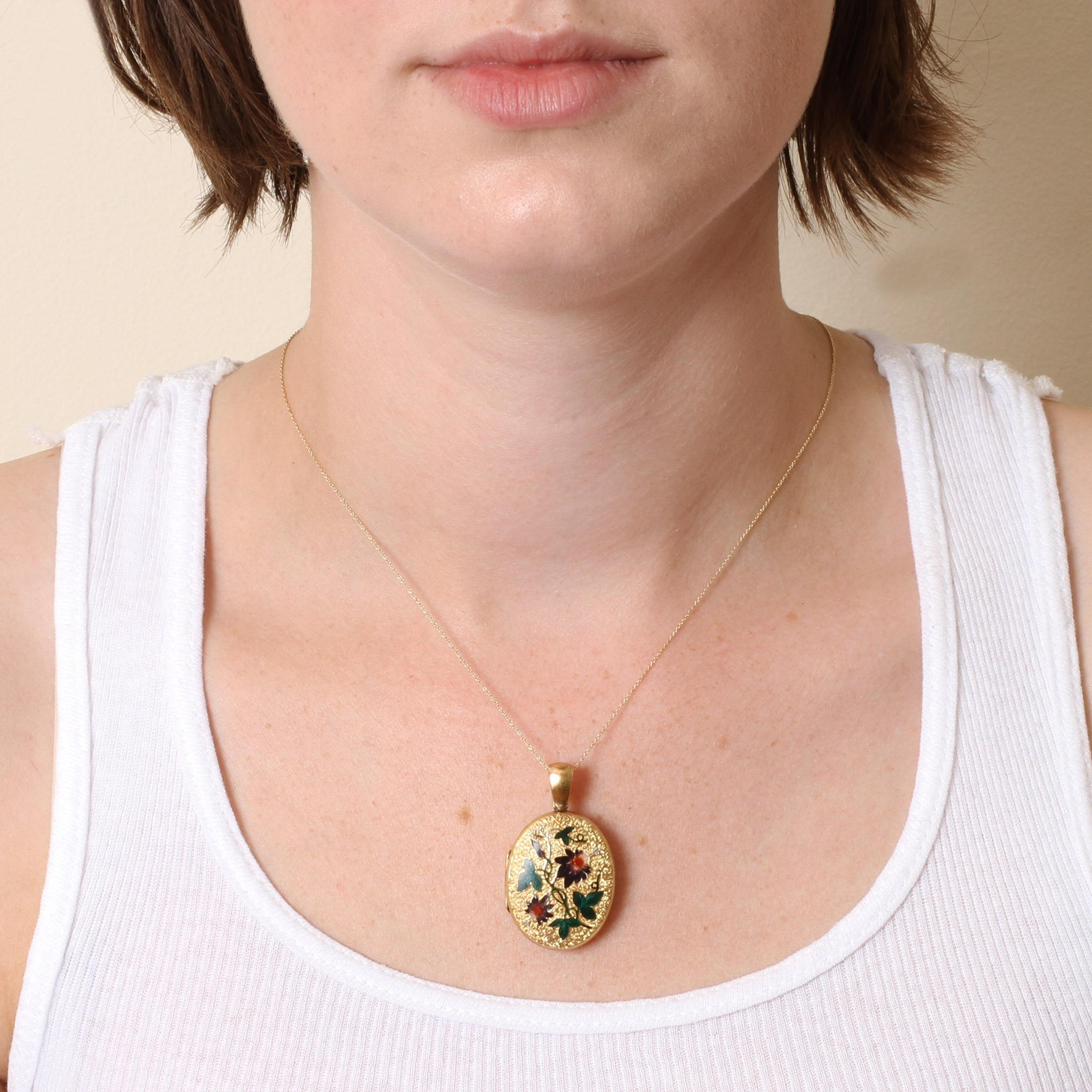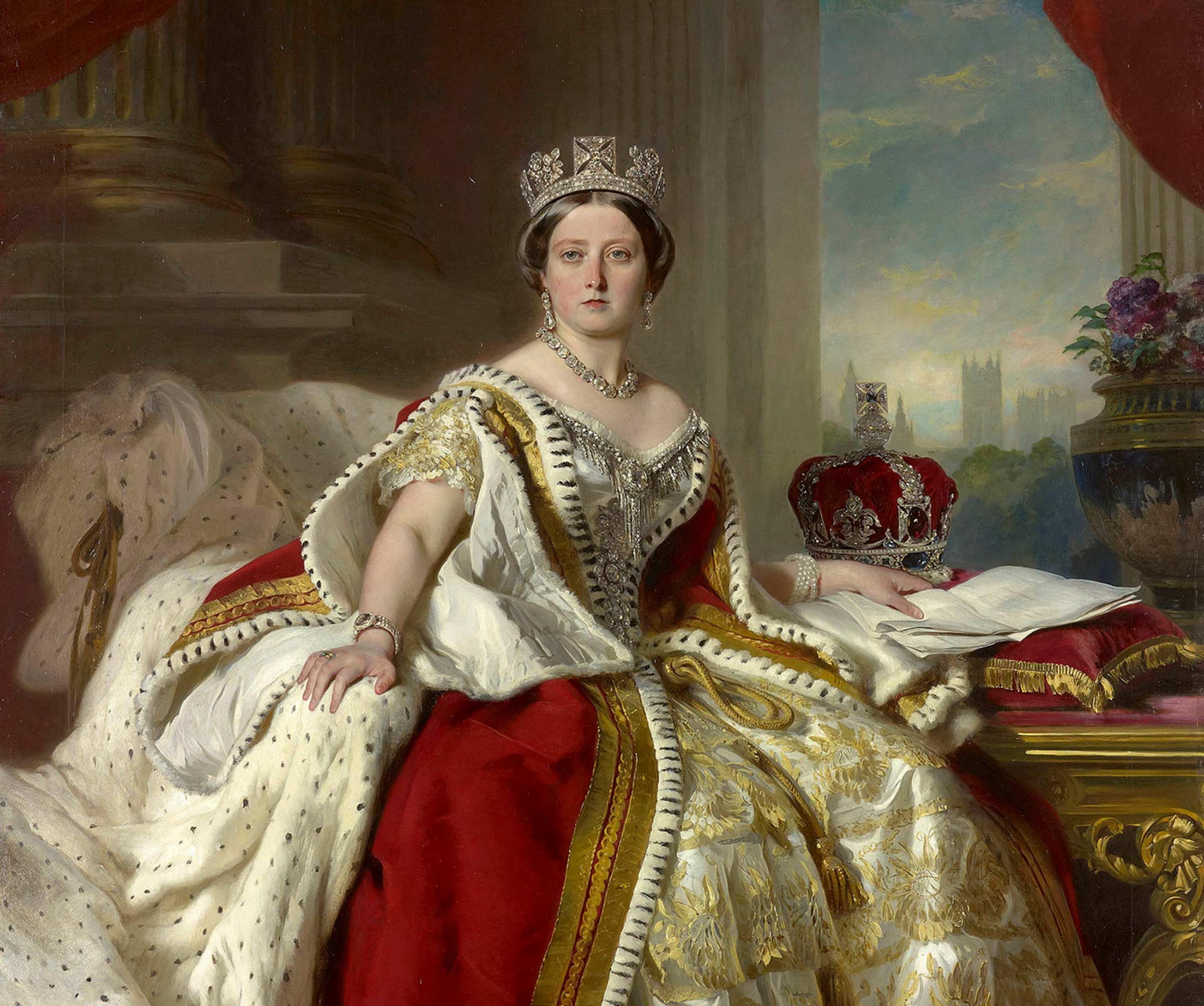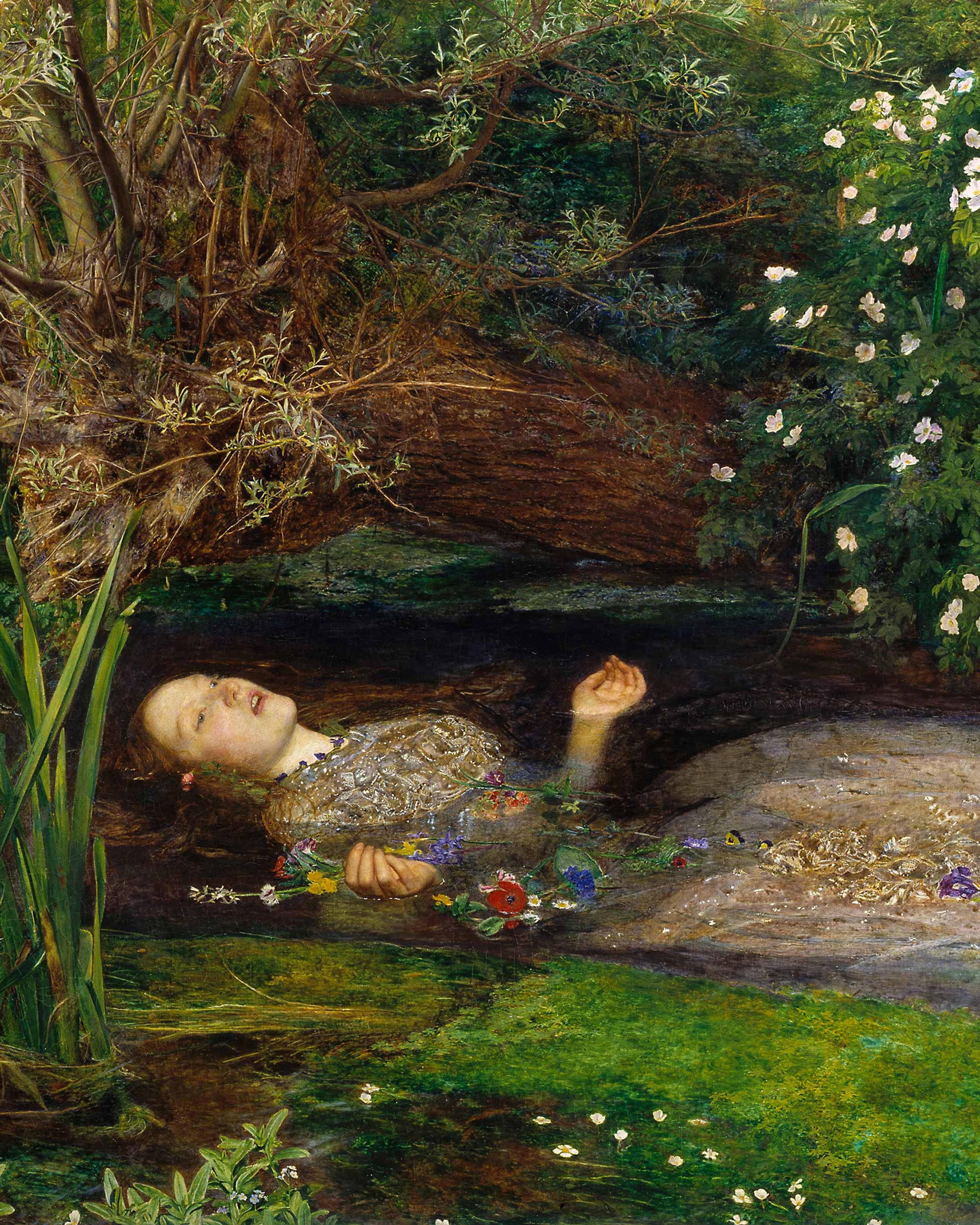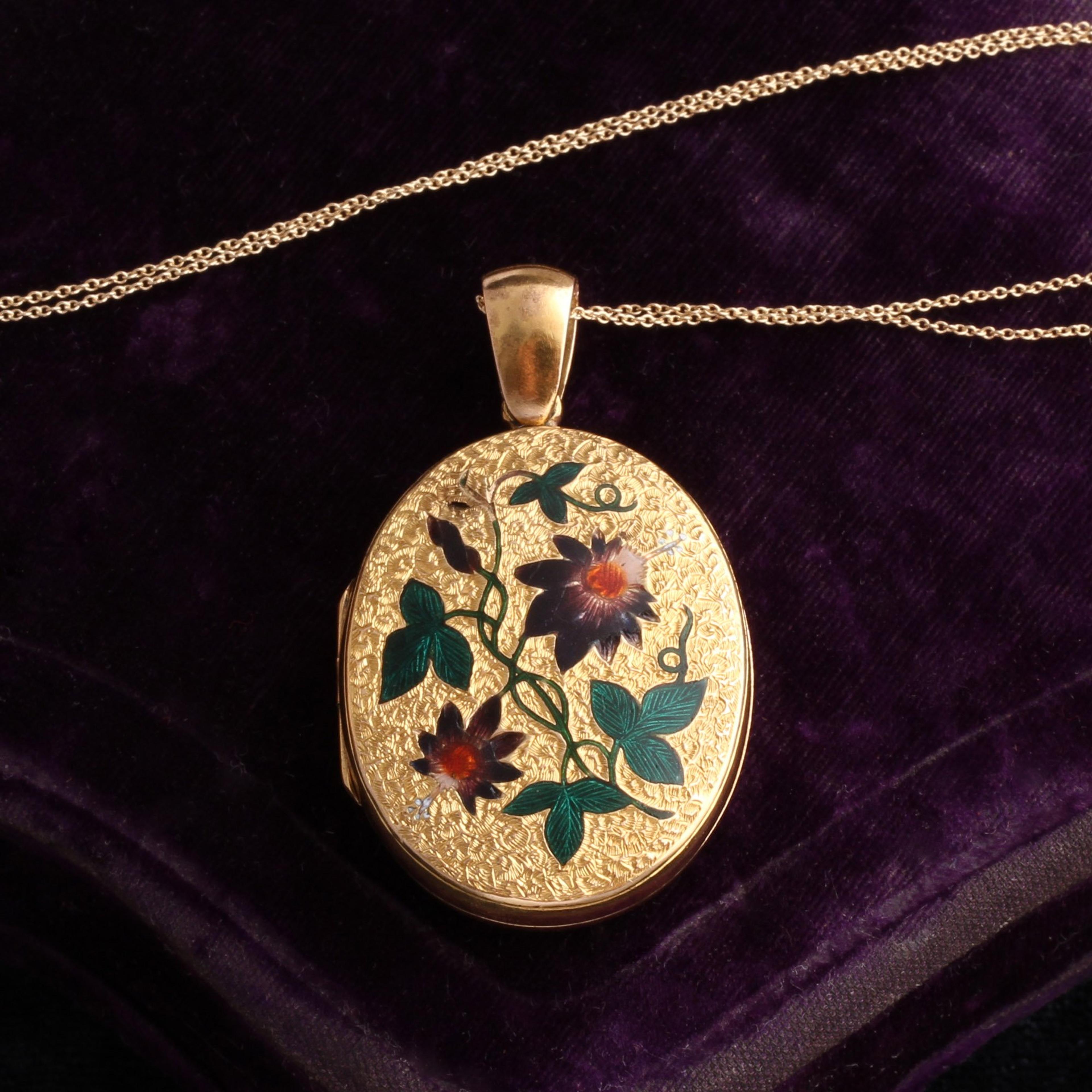In the Victorian era, flowers were employed as a secret language used to express hidden sentiments. In an age when open self-expression was a big cultural no-no, learning the sentiment assigned to each flower was a way to communicate in floral code. Feelings that could not be expressed publicly (or even verbally!) could be expressed through the language of flowers. This exquisite Victorian locket features beautifully enameled passion flowers over a textured ground. Don't be misled, though "passion" is in the name, the flower used to convey passion is actually the tulip. The passion flower is an expression of mourning the loss of a loved one. Given its use vibrant color, this incognito memorial locket would have been worn at a late stage of mourning. Hangs from a new 18" 14k gold chain.
thedetails
- Materials
14k gold (tests), enamel, new 14k gold chain
- Age
c. 1860
- Condition
Very good - a little enamel loss at the upper stems and the whites of the stamens; glass lenses and fittings are present
- Size
1 5/8" length including the bale, 1" width, 18" chain
Need more photos?
Send us an email to request photos of this piece on a model.


Aboutthe
VictorianEra
1837 — 1901
The Victorians were avid consumers and novelty-seekers, especially when it came to fashion, and numerous fads came and went throughout the 19th century. In jewelry, whatever fashion choices Queen V. made reverberated throughout the kingdom. The Romantic period reflected the queen’s legendary love for her husband, Albert.
Jewelry from this period featured joyful designs like flowers, hearts, and birds, all which often had symbolic meaning. The queen’s betrothal ring was made in the shape of a snake, which stood for love, fidelity, and eternity. The exuberant tone shifted after Prince Albert passed away in 1861, marking the beginning of the Grand Period. Black jewelry became de rigeur as the Queen and her subjects entered “mourning,” which at the time represented not just an emotional state, as we conceive of it today, but a specific manner of conduct and dress. She wore the color black for the remainder of her life, and we see lots of black onyx, enamel, jet, and gutta percha in the jewelry from this time. Finally, during the late Victorian period, which transitioned along with a rapidly changing world into the “Aesthetic Movement”, there was a return to organic and whimsical motifs: serpents, crescent moons, animals, and Japonaisserie designed for the more liberated “Gibson Girl”. During the second half of the 19th century, America entered the global jewelry market, with Tiffany and Co. leading the way. Lapidaries continued to perfect their techniques, and the old European cut emerged toward the end of the Victorian period. The discovery of rich diamond mines in South Africa made the colorless stones more accessible than ever before.

